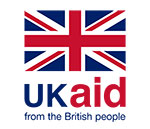Recently the UK tested its new public alerts system that will be used to warn people if there is a danger to life nearby and share information on how to stay safe.
Early warning systems have long been used around the world to save lives by sending alerts regarding imminent risk and disasters.
With natural hazards such as heatwaves, floods and cyclones increasing in frequency and severity – having early warning systems in place is crucial to keeping people safe and better prepared for future events.
We know disaster preparedness helps to save more lives, and just 24 hours’ notice of an impending hazardous event can cut the ensuing damage by 30%.
Mobile’s role in early warning
95% of the world’s population is covered by a mobile network and there are 5.4 billion unique mobile subscribers globally. Mobile therefore plays a life-saving role in early warning dissemination and communication, and our existing mobile networks are ideally placed for risk alerts.
The GSMA Humanitarian Innovation Fund, with the support of the UK Foreign, Commonwealth and Development Office, has invested in solutions from extreme weather preparedness in Haiti, mobile-internet-of-things enabled fire sensors in South Africa, and provision of accurate information to disaster responders.
The GSMA Innovation Fund for Climate Resilience and Adaptation supports Komunidad, a Software-as-a-Service company that helps governments and companies to manage climate risk and optimise for the low carbon future. We also published a report on early warning systems more broadly in the Philippines and a specific case study on the role of the mobile industry in the response to Typhoon Rai.
Mobile operators disseminate warnings, using cell broadcast, SMS or Interactive Voice Response (IVR) – and prepare for and respond to disasters by coordinating with first responders and governments. They also help detect and forecast risks – using AI and Big Data.
GSMA’s Mobile for Humanitarian Innovation programme is a member of the Emergency Telecommunication Cluster and involves mobile network operators as key stakeholders in the Cluster’s regional and country level emergency telecommunication preparedness initiatives.
To ensure everyone receives early warning messages, mobile alerts should be a part of a larger multi-hazard early warning system that includes the use of television, radio and other community-based channels.
Cell Broadcast Technology
The UK Public Alerts system, like many others around the world, uses a technology called cell broadcast to disseminate warnings.
Cell broadcast has several practical advantages in terms of implementation for an early warning system. These include:
- Messages and distinct warning tones, broadcast to mobile devices automatically with no user interaction in the event of a life-threatening incident.
- Warnings to millions of connected handsets in a defined area within seconds.
- No delays in message delivery, as there is no network congestion.
- Warnings only sent from verified sources and authorised personnel, such as the emergency services.
Some systems use location-based SMS which can reach all devices, also supports multi-language alerts, and gives access to numbers of users in risk areas.
Important considerations
For people who may have been put at risk from the test of the UK’s Emergency Alert service, such as survivors of domestic abuse that have a second phone hidden within the home, alerts can be switched off where needed. We welcome the many groups who raise awareness and share information about disabling alerts for those at risk.
Global ambition to reach everyone with early warnings
In 2022, the United Nations Secretary General announced an ambition for everyone in the world to be protected by an early warning system by 2027. We are pleased to bring our experience to the global Early Warnings for All Initiative, which has been convened by the World Meteorological Organisation and the United Nations Office for Disaster Risk Reduction.
Our Director General Mats Granryd sits on the high-level Advisory Board of this initiative, and we are participating across all four pillars of action, enabling and highlighting the work of our mobile operator members and humanitarian partners to realise this important ambition. In particular, we are working closely with the International Telecommunication Union, International Federation of Red Cross and Red Crescent Societies, and other partners on Pillar 3 that focuses on Warning Dissemination and Communication.
This work aligns closely to the principles of our Humanitarian Connectivity Charter, a set of shared principles for our industry for cooperation in times of emergency.
The GSMA’s global position and knowledge means that we bring unique expertise to this initiative. Through this work, we will continue to share and demonstrate best practice, convene partners, and provide technical support to enable the implementation of critical early warning systems around the world.



